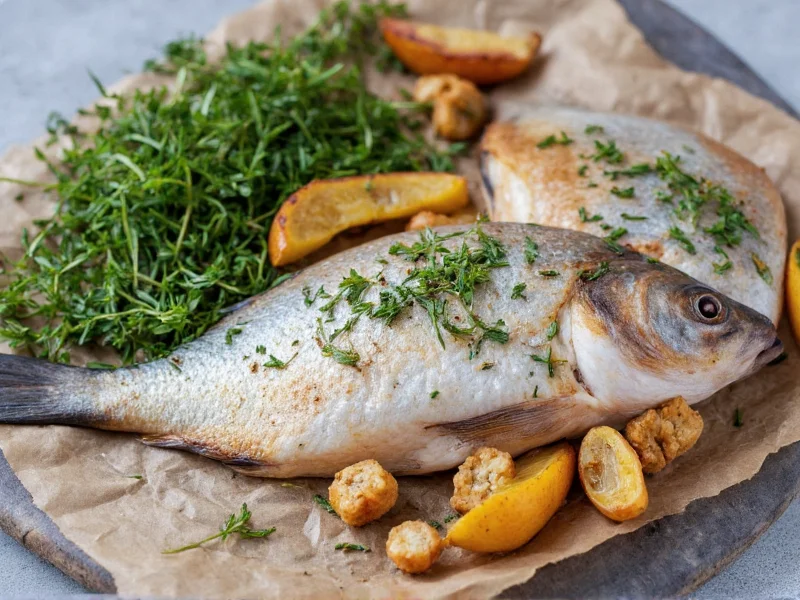When exploring how to use thyme with fish, understanding the herb's flavor profile is essential. Thyme contains thymol, an aromatic compound that harmonizes beautifully with the natural sweetness of seafood. This culinary pairing has been perfected over centuries in Mediterranean cuisine, where fresh thyme often features in classic fish preparations.
Why Thyme Complements Fish Perfectly
Thyme's moderate intensity makes it ideal for seafood applications. Unlike stronger herbs that can dominate delicate fish flavors, thyme provides subtle earthiness with citrus undertones that enhance rather than mask. The herb's essential oils interact with fish proteins during cooking, creating complex flavor compounds that satisfy sophisticated palates while remaining approachable for casual dining.
Best Fish Varieties for Thyme Pairing
Not all fish respond equally to thyme. Understanding which species work best prevents culinary disappointment. Firm-fleshed fish maintain structure when cooked with thyme's robust flavor, while delicate varieties require more restrained application.
| Fish Type | Thyme Recommendation | Preparation Tip |
|---|---|---|
| Cod | Fresh common thyme | Add during final baking minutes |
| Salmon | Lemon thyme | Combine with lemon slices before roasting |
| Halibut | Fresh thyme | Create herb crust with breadcrumbs |
| Tuna | Dried thyme | Rub on steak before searing |
| Sea Bass | Lemon thyme | Stuff cavity with sprigs before cooking |
Practical Application Techniques
Fresh vs. Dried Thyme for Seafood
Professional chefs consistently prefer fresh thyme for fish preparations. Fresh sprigs contain volatile oils that release gradually during cooking, creating layered flavor development. Dried thyme works better for robust fish steaks or when creating dry rubs, but use only one-third the quantity of fresh thyme to prevent overpowering.
Timing Matters: When to Add Thyme
The cooking method determines optimal thyme incorporation:
- Baking/Roasting: Place fresh sprigs on fish during last 5-10 minutes
- Poaching: Add whole sprigs to poaching liquid 2 minutes before finishing
- Grilling: Create herb bundles tied with kitchen twine for indirect heat application
- Pan-searing: Add minced thyme during final minute of cooking
Signature Thyme-Fish Recipe Ideas
Mediterranean Baked Fish
Arrange fish fillets in baking dish with cherry tomatoes, Kalamata olives, and lemon slices. Scatter fresh thyme sprigs generously over top. Drizzle with olive oil and bake at 375°F (190°C) for 12-15 minutes until fish flakes easily. This preparation showcases how to use thyme with fish in classic Mediterranean style.
Lemon Thyme Salmon
Create a compound butter with softened butter, minced lemon thyme, lemon zest, and black pepper. Place chilled salmon fillets skin-side down, then top with generous dollops of compound butter. Roast at 400°F (205°C) for 12-15 minutes. The butter melts slowly, basting the fish with aromatic thyme essence.
Avoiding Common Thyme-Fish Mistakes
Many home cooks make critical errors when pairing thyme with seafood. Understanding these pitfalls ensures culinary success:
- Overpowering delicate fish: Use half the thyme quantity with mild fish like sole
- Adding too early: Fresh thyme loses complexity when cooked too long
- Using dried thyme incorrectly: Never substitute 1:1 with fresh varieties
- Ignoring stem texture: Remove tough stems before serving delicate fish
Complementary Flavor Partners
Thyme rarely works alone in fish preparations. These combinations create balanced flavor profiles:
- Citrus elements: Lemon or orange zest enhances thyme's bright notes
- Alliums: Shallots provide sweet foundation without overwhelming
- Fats: Olive oil or butter carries thyme's essential oils through dish
- Acids: White wine or vinegar balances thyme's earthiness
Storage and Freshness Tips
Proper herb handling affects final dish quality. Store fresh thyme sprigs in a glass of water like flowers, covered loosely with a plastic bag in the refrigerator. Change water every two days. For extended storage, freeze whole sprigs in olive oil cubes. Dried thyme maintains potency for 6-12 months when stored in airtight containers away from light.
Conclusion: Mastering Thyme-Fish Pairings
Successful integration of thyme with fish requires understanding both ingredients' characteristics. By respecting fish delicacy while leveraging thyme's aromatic complexity, home cooks can create restaurant-quality seafood dishes. Remember that less often proves more with this pairing—thyme should enhance, not dominate, the natural seafood flavors. Experiment with different thyme varieties and application techniques to discover your preferred approach to this classic culinary combination.











 浙公网安备
33010002000092号
浙公网安备
33010002000092号 浙B2-20120091-4
浙B2-20120091-4